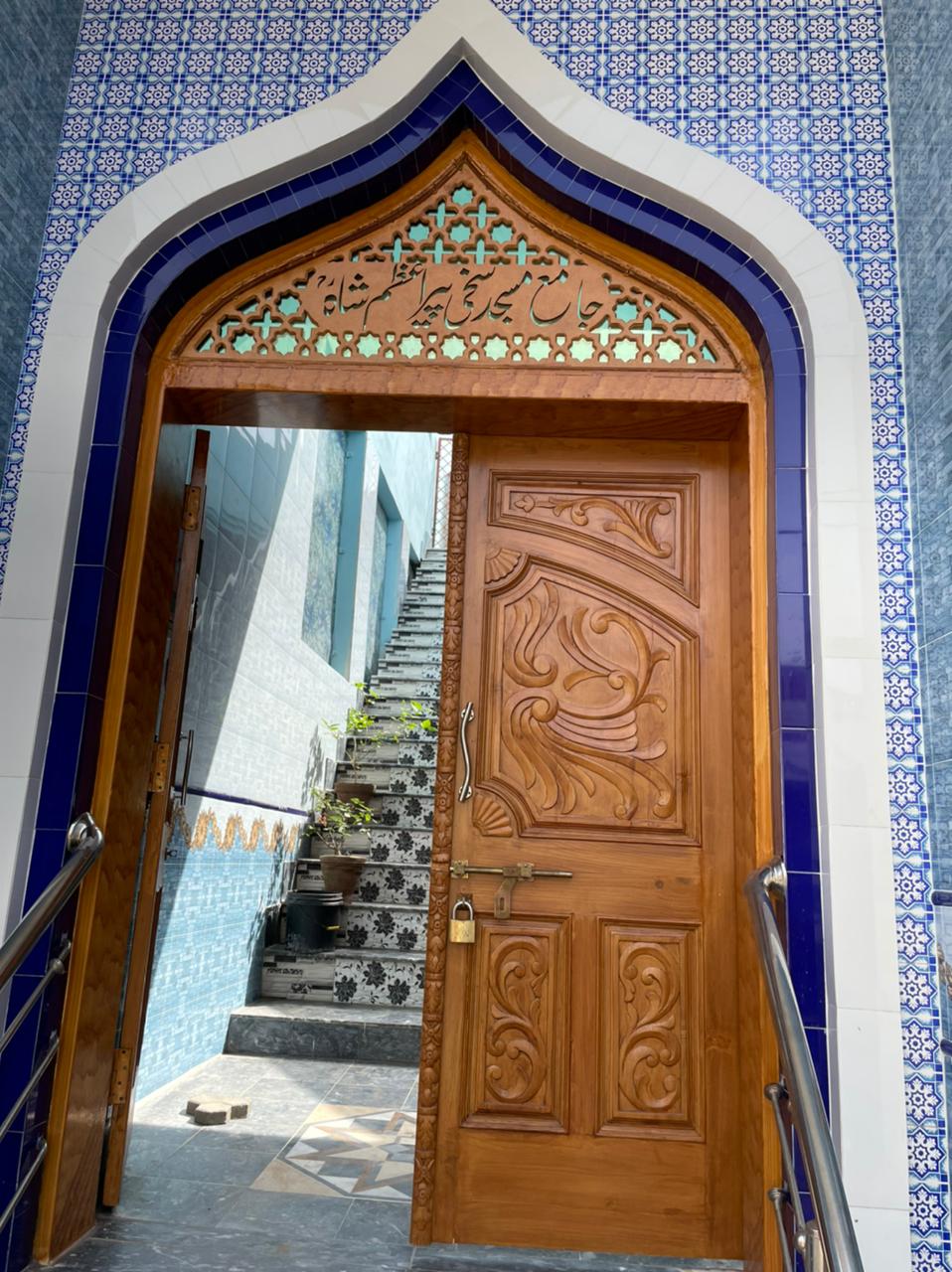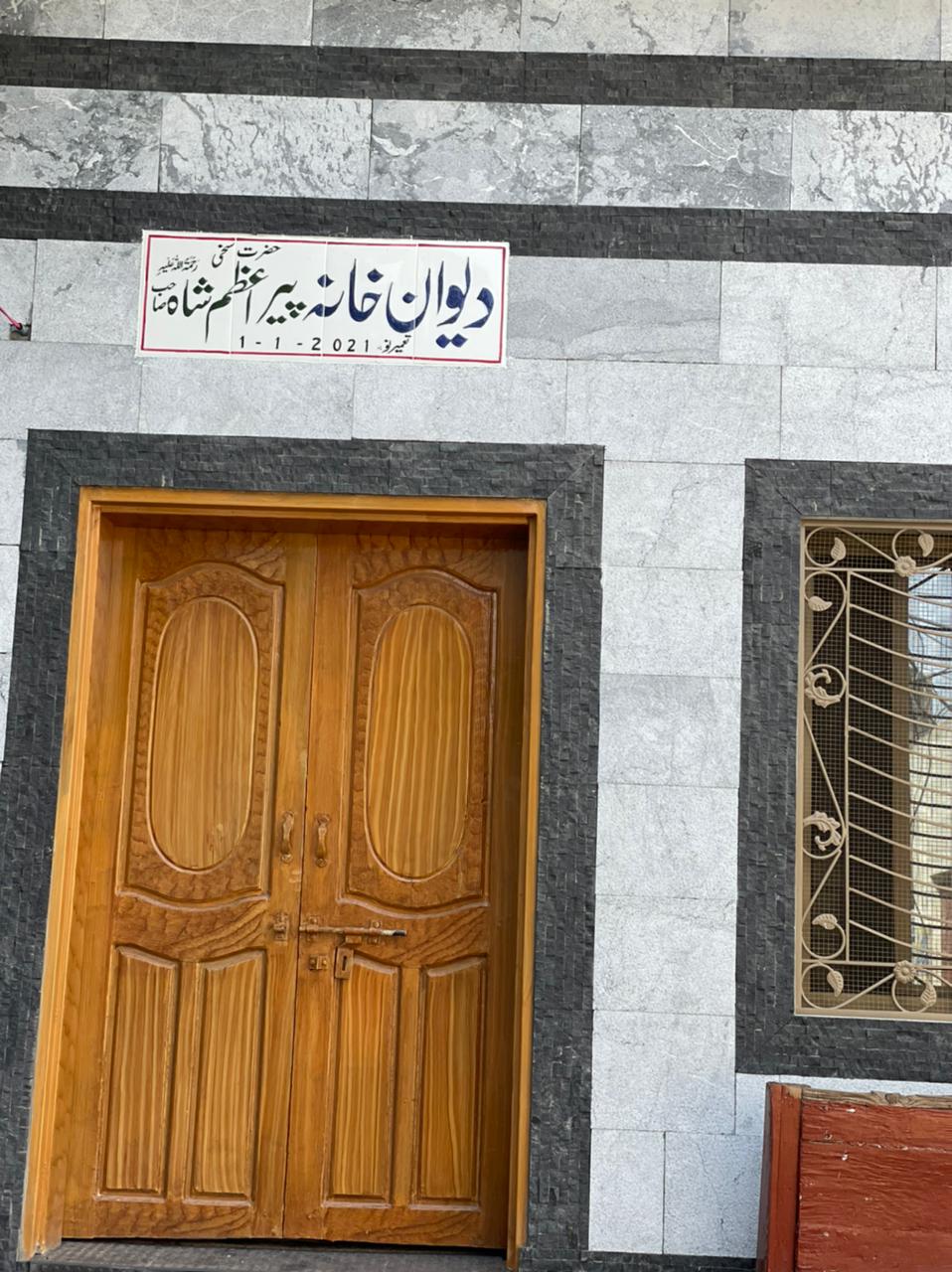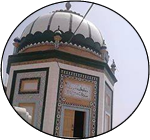Buildings:
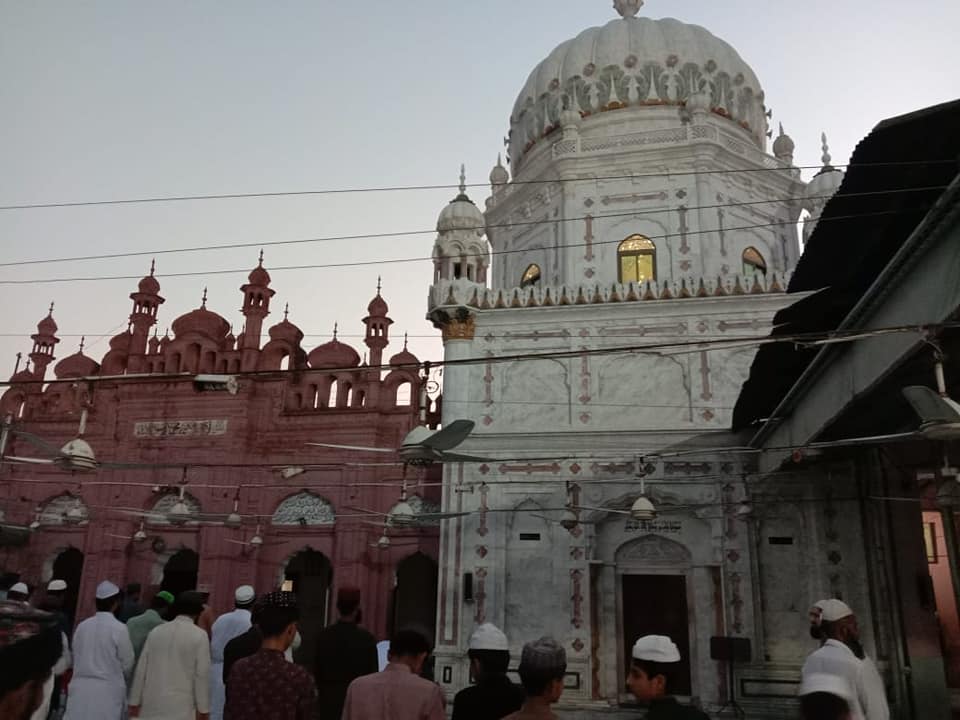
Bheera Musjid
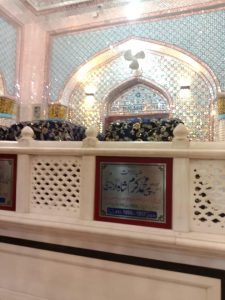
DAG University
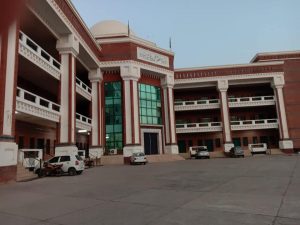
PKS Muqaam
Sargodha was established by the British as a canal-colony in 1903, and was initially spelt Sargoda.Sargodha was badly affected by an outbreak of the plague in 1903, and experienced a milder outbreak in 1904.Although it was a small town in the beginning, the British Royal Air Force built an airport here due to its strategic location.
Pir Ghulam Mahboob Subhani , Lahore
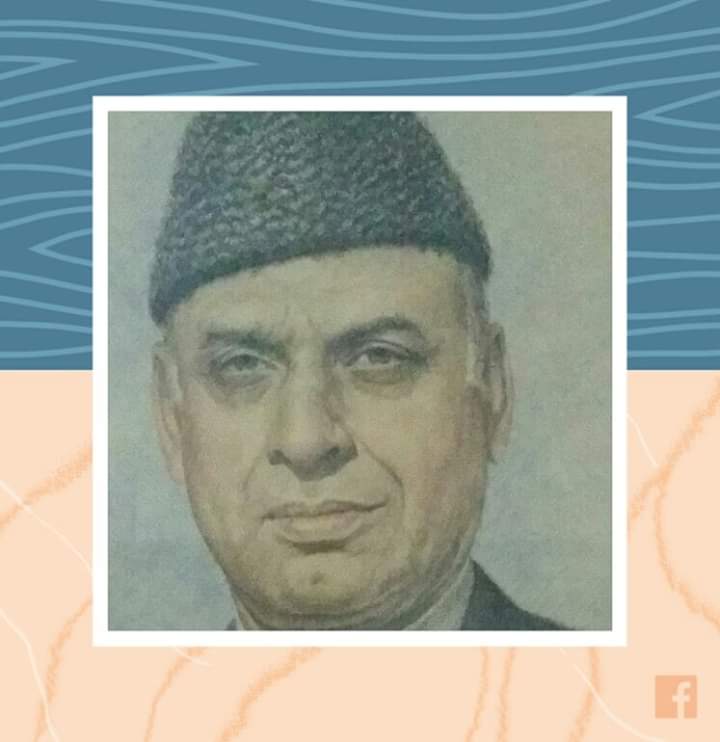
Pir Ghul Jeelani Shah ( England)
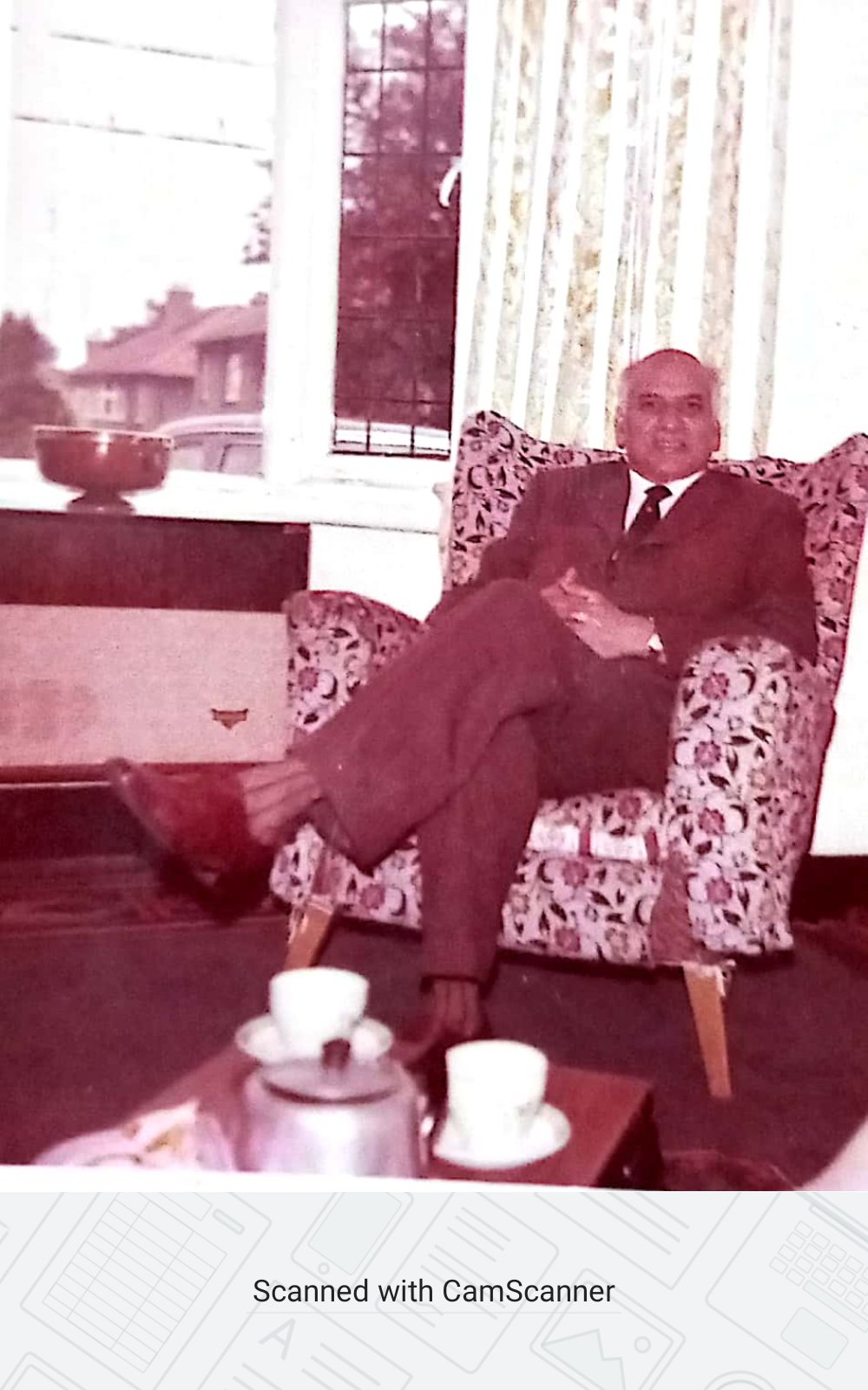
MUSLIMS IN LEEDS:
Introduction This essay aims at demonstrating the development of the Muslim community in the City of Leeds from its inception to the present day. In so doing, it will attempt to show how far the Leeds community conforms to or departs from other large Muslim communities in Great Britain, and also what direction religious and ethnic life may possibly take under the impact of demographic changes and world-wide developments in Islam. The local information gathered in this essay comes from interviews with several prominent members of the Muslim community to which I shall refer later, and Census figures released by the Department of Planning at Leeds City Council. The population estimates derived from the Census returns are problematic. There is no question on the Census forms regarding religion. In 1971 and 1981 the ward figures were calculated from a question asking for an individual’s country of origin. Figures from those originating from the Indian subcontinent obviously do not include Muslims born in Leeds. In these years, there was also a question regarding the place of origin of heads of household. From this information an estimated total population for each community was calculated. However, the 1991 Census returns contained information derived from a new question regarding ethnic origin. Consequently, the Leeds ward breakdowns included both migrants and their children born in Britain. There was also a question regarding place of birth so it was still possible to differentiate the two categories. Unfortunately, by 1993, there were no figures released which correlated gender and ethnic identity from the 1991 Census. Although the 1981 Census revealed the presence of migrants from different parts of the Islamic world (see Table 1, Appendix 1), the overwhelming majority were from the Indian sub-continent, particularly Pakistan. This conforms with the pattern of Muslim communities throughout Britain. Of the 14,854 subcontinent Asians in Leeds counted in the 1981 Census, it was calculated that 58% (8,639) were Indian, including Sikhs and Hindus, 36% (5,284) were Pakistani, and 6% (931) were from Bangladesh. The Census does not reveal religion, but it must be assumed that a small minority of the Indian migrants are Muslim. According to the 1991 Census figures the overall South Asian population grew by 1991 to 20,996 (see Table 2, Appendix 1) in which 47%(9,903) were Indian, 44 % (9,316) Pakistani, and 9% (1777) Bangladeshi. The most noticeable change was the percentage increase in the -2- predominantly Muslim populations originating in Pakistan and Bangladesh. This increase can be analysed in more depth by comparing the total populations of those born in the various nations of the subcontinent with the figures of those born in Britain. This has changed considerably from 1981 to 1991. Despite the fact that 1,390 Pakistanis and 391 Bangladeshis migrated to Leeds in this period (the Indian figures for first-generation migrants has actually decreased), the percentage population born in Britain rose to a marked degree (see Appendix 4). Taking into account the current immigration laws and the increase in the numbers of children being born to Pakistanis and Bangladeshis, it can be assumed that women formed the majority of the new arrivals. According to the 1991 figures, there were 11,093 Muslims in Leeds originating from the subcontinent, excluding the hidden figure amongst the Indians. Of this figure a small minority (800-900) migrated from East Africa. To this total must be added a transitory, international group of Muslim students studying at the Universities and other colleges in Leeds. This figure conforms with the Muslim community’s own perspective on its size. Although the ‘mains tend to hazard estimates of 20,000, generally it is considered by most Muslims that they number around 15,000 in the city. In view of the degree to which South Asians dominate the Muslim population, my research has not investigated the smaller communities of Arabs, Turks and Africans (Appendix 1), and has remained centred on the Pakistani and Bangladeshi Muslims. From the Subcontinent to Leeds – The Early Settlers Alison Shaw (1988, p.12-13), in her study of Pakistanis in Oxford, notes that the different areas of origin in Pakistan are reflected in the distribution of migrants in British cities.
The main regional divisions in the Muslim community from the subcontinent are:
- Mirpur District in Azad Kashmir
- Campbellpur District in the Punjab
- Certain villages in the Nowslera Sub-District, Peshawar
- Certain villages in the Districts of Rawalpindi, Jhelum, Gujrat and Faisalabad in the Punjab
- The District of Sylhet in the North-Western corner of Bangladesh
Although Leeds contains small groups of migrants from all these areas, by far the most dominant group in the city, as in Birmingham and Bradford, is the Mirpuris. There is also a significant minority of Bangladeshis mainly originating from Sylhet. The research done by Alison Shaw and also Muhammad Anwar (1985) concurs that the primary motive for migration was economic. Besides the ‘pull’ factors of demand for labour in Britain from the 1950’s onwards in cities where industry was expanding, there was also a ‘push’ factor in certain areas of the subcontinent. Mirpur suffered from unemployment, and the quality of the land was poor. In the early 1960s, 100,000 people were displaced by the construction of the Mangla Dam. Many who had relatives in Britain used their compensation money to migrate and search for work. There are, however, equally poor areas of Pakistan that have no history of migration to Britain. In Mirpur there was a tradition, stretching over several generations, of service in the British army and the merchant navy. Mirpuri men had both a tradition of travelling from their homes to work in service and strong bonds of loyalty to Britain forged through the years of the Raj. Many of the pioneer settlers arrived in Britain as seamen or soldiers during World War II. They decided to stay here in order to earn and save money that would benefit kinsfolk at home. In so doing, they became the first links in a ‘chain of migration’. According to this idea, a lone immigrant `makes good’, news of his success reaches his country of origin, and he recruits other members of his family and friends, usually, like himself, young and single (Price,1963). This pattern is confirmed in the formation of the Muslim community in Leeds. Chaudri Bostan Khan arrived in London in 1941 from Mirpur. His family had a strong tradition of army and navy service. He claims to know of 120 family members across four generations who had served the British in this way. His uncle worked for the City Line in Bombay. In 1936, aged 25, Bostan Khan took his first voyage out from Bombay to England. His voyages took him to New York, Montreal, and Melbourne. When the War began, he rejoined the navy and jumped ship in London. His intention was to discover a better life for himself, “English people go look in Pakistan, so I go look on England, to look for labour, for a good living”. When interviewed in 1989, Chaudri Bostan Khan was 78 years old. He has recently died in 1992. He was surrounded by friends and relatives from his own and nearby villages in Mirpur. In Leeds, he was known as ‘the Father of the Mirpuris’. He was a successful businessman who boasted that since coming to Britain, he had worked only for himself . Before coming to Leeds in 1946, he worked as a market trader in Huddersfield and Newcastle, selling hairgrips, babies’ dummies and
plastic combs. He and a cousin opened two restaurants in East London, and then he moved to Leeds where he opened a fish and chip shop. Until 1971 he expanded his fish and chip business and then moved into the textiles’ industry, wholesaling cloth. In 1989 he had two large factories and several shops in Leeds. All his business concerns were managed by family members who migrated from Mirpur. In 1948 Chaudri Bostan Khan married an -4- Englishwoman who eventually converted to Islam. They ran the businesses together. Mrs.Khan was invaluable for her knowledge of English life and her skill in dealing with paperwork. Chaudri’s friends and relatives began to arrive, beginning with his brother in 1950. Mrs.Khan liaised with the authorities and dealt with the formalities of immigration. Chaudri provided his countrymen with employment and housing. Like many who were to follow him, Chaudri Bostan Khan thought for many years that he would return to Pakistan but this never happened. Up to the time of his death he was the President of the Leeds Islamic Centre. This pattern is approximately repeated in the Bangladesh community, although it should be noted that before being eclipsed by the mass migration of Mirpuris to the city, Bengalis were the dominant group amongst the early settlers. Mofizur Rahman arrived in Leeds a few years after Chaudri Bostan Khan. Like Chaudri, he had also worked for a steamship company. Mofizur Rahman was born in Noahkali, Bengal but moved to Calcutta when he was nine years old. Fascinated by the uniform of his police sergeant uncle, Mofizur joined the Indian Army in 1939 at the age of 14 after hearing the announcement of Mahatma Gandhi which authorised Indians to join the Allied forces against Germany. After his regiment were disbanded by the British Mofizur joined the Merchant Navy with the assistance of an uncle. Barely 16, he left India on the SS City of Bombay bound for Canada. He found himself in a Glasgow seamen’s boarding house in 1942 after the ship was torpedoed in the Channel. Helped by a member of the Indian National Congress Party, he travelled to London where he was employed on the night shift by Martin’s Sugar factory in Aldgate. In spite of working a twelve hour night shift, Mofizur also worked as a waiter at the weekends. In 1944 he went to hear Muhammad Jinnah speak on the necessity of a separate Muslim state at a public meeting in Piccadilly. At this time he decided to support the Muslim League. Shortly after this event, Mofizur left his job at the factory and worked full-time as a waiter. He had managed to save £300 and, in partnership with a friend, purchased a restaurant at 24 Chapeltown Road, Leeds, called the Ghulstan. After two years he opened a cafe on the Kirkstall Road which is where he met his English wife who at the time was an apprentice tailor. Mofizur Rahman has since had several businesses in the city including a fish and chip shop, wholesaling, and two shops in
Leeds Market which he still maintains with his wife. As with the other early settlers, he has been prominent in organising the community around the practice of Islam since his arrival in Leeds. In particular, he was instrumental in founding the first mosque in the city. Besides the large majority of migrants from Mirpur and Bengal who were largely uneducated village people, there was a small minority of settlers in Britain who came to further their education and gain better qualifications. P. G. J. Shah first arrived in England in 1924. He returned to the Punjab in 1925, but came back to study -5- engineering in London in 1933. Qualifying as a civil engineer, he arrived in Leeds in 1943 to take up a position as a mining engineer. In 1951 he returned to Pakistan but finally decided to remain in Leeds from 1953. Mr. Shah confirmed that there was no community in Leeds when he arrived, only a few individual market traders and itinerant pedlars. There was a
small community in Bradford with which he communicated, helping to found the
Pakistan Muslim Association in that city. He purchased a house near the university
in Leeds and was joined by several people who moved from Bradford at the end of
the War, also purchasing properties. Thus was begun the large Muslim community
in the University ward which later declined (see Diagrams B and D in Appendix 3).
The 1991 Census figures would suggest that the numbers of Muslims in the area
has recovered as a result of the population in Harehills moving outwards in a circle from that area (see Diagram G, Appendix 3). Mr. Shah confirmed that he came
originally to study but stayed because he liked it. He went on to pursue a successful career as an architect in the city. Like Chaudri Bostan Khan and Mofizur Rahman, he married an Englishwoman in 1948. This pattern of marrying English women was repeated by several of the early settlers (Sanneh, N.D, p3). Mr.Shah explained that in the absence of a large immigrant community, there was more mixing with the host community. He suggested that it was easier to make friends with English women as they were more tolerant and understanding than their male counterparts. This inevitably led to marriages which bridged the cultures. Mr. Shah’s children attended church on Sundays, and joined the girl guides and boy scouts, but also attended classes at the mosque in reading the Qur’an and learning the fundamentals of Islam. All his children later married English partners and were said to be agnostic. Mr. Shah considered himself a part of the Indian tradition of liberal Islam. Since his involvement in the Pakistan Muslim Association in Leeds with Chaudri Bostan Khan and Mofizur Rahman from 1961, he firmly advocated that all Muslims, regardless of sect, nationality, or belief, should come together for prayer in the mosque. From its foundation up to 1986, he was the Chairman of the Islamic Centre.Muhammad Rashid Ali is the child of a mixed marriage between one of the very first settlers in Leeds and an Englishwoman. His father arrived in Glasgow in 1928 from what would now be Southern Pakistan. He travelled aboard ship with a mixed group of Hindus, Sikhs, and Muslims who all dispersed to various parts of Britain. A party of the Muslims left for Cardiff, including the only teacher amongst the group. Muhammad Rashid suggested that this may explain the development of the Cardiff community, since from the beginning there was a religious teacher to educate the English wives and children of the earliest subcontinent Muslim migrants to the city in the basics of Islam. Muhammad Rashid’s father settled in Leeds in 1929. He worked throughout Yorkshire as a door-to-door pedlar, selling fabrics and
household items -6- out of a large suitcase. Muhammad Ali married in 1936. He eventually became a middleman in the textiles industry, after years of running a stall in Leeds market. Muhammad Rashid was born in 1938, and was almost certainly the first Muslim born in Leeds. He followed in his father’s footsteps and married an Englishwoman. His children also married English partners, and do not consider
themselves to be Muslims. Muhammad Rashid explained that his father did not teach him Islam. Like many of the immigrants that were to follow him to Britain, Muhammad Ali was uneducated. He could not read or write, and his knowledge of his own faith was rudimentary. Whatever he knew of Islam had been gleaned from wandering religious teachers who visited his village, gathered the small children
together and taught them to learn by rote. This type of religious education typified the experience of many Mirpuris who came from similar backgrounds to Muhammad Ali. Muhammad Rashid explained that his father believed in the Muslim way, but being in Leeds in the early days, his friends were mainly Jews and some Christians. He also considered that his father was too busy to teach Islam to his children. He suggests that his father moved to England because he wished to improve his life. “He was uneducated but wished to seek for something better”. His inspiration was the contact he had had with English culture and people back in colonial India. He saw England as the mother country. He hoped by marrying an Englishwoman to provide his children with a dual education, uniting the two cultures. Muhammad Rashid’s earliest memories were of the differences between his mother’s and father’s lifestyles and cultures. At school in North Street, and later at Woodhouse Secondary, he was the only Asian child. The school was split equally between Jewish and Christian children. Chapeltown was still a large Jewish ghetto. The first Muslim migrants lived on the edge of the Jewish community in Little
London or around the University area. The community only began to congregate in Chapeltown as the Jews moved northwards, and the first mosque was bought in Leopold Street. Muhammad Rashid knew nothing about Islam, but when asked at school replied that he was a Muslim. His idea of Islam at the time was “someone who comes from the same place as my father”. From this time he became intensely
curious to know why his father was different. In 1961 Muhammad Rashid also had a son. This event triggered his latent desire to find out about Islam. He found himself a teacher, Ahmad Shuttari, who had just arrived in Leeds to study at the University. Amongst the Muslims beginning to arrive in Leeds in the early 1960s, Ahmad Shuttari was to be very influential in the development of the Islamic faith in the city.
A schoolteacher by profession, he was wellversed in his religion and able to read Arabic. Muhammad Rashid learnt to read the Qur’an and the fundamentals of Islam from Ahmad Shuttari. Later he was to become caretaker of the newly-opened Islamic Centre Mosque. This position would result in -7- him conducting parties of schoolchildren around the mosque and explaining the rudiments of Islam. In the
late 1980s he could be seen lecturing at over 90 schools in Yorkshire, speaking to church groups, the police, and the fire service, and advising the prison services on race relations. He was appointed the first Muslim magistrate in the city, and was the Public Relations Officer at the Islamic Centre. Muhammad Rashid’s unique background resulted in a search for his Islamic roots, and his Islam was of the nature of a conversion experience.
He stated, “Having a Muslim.

